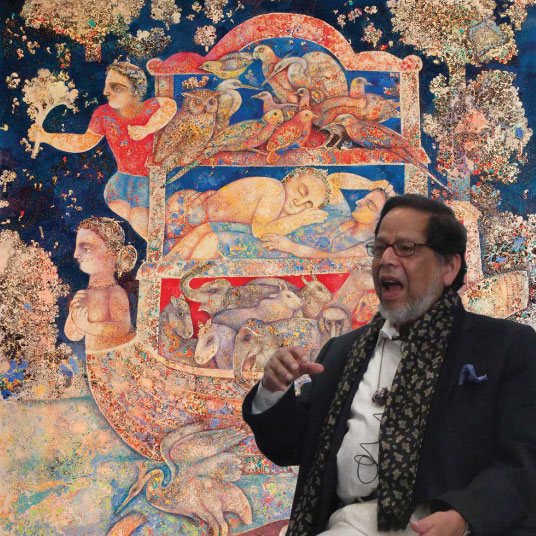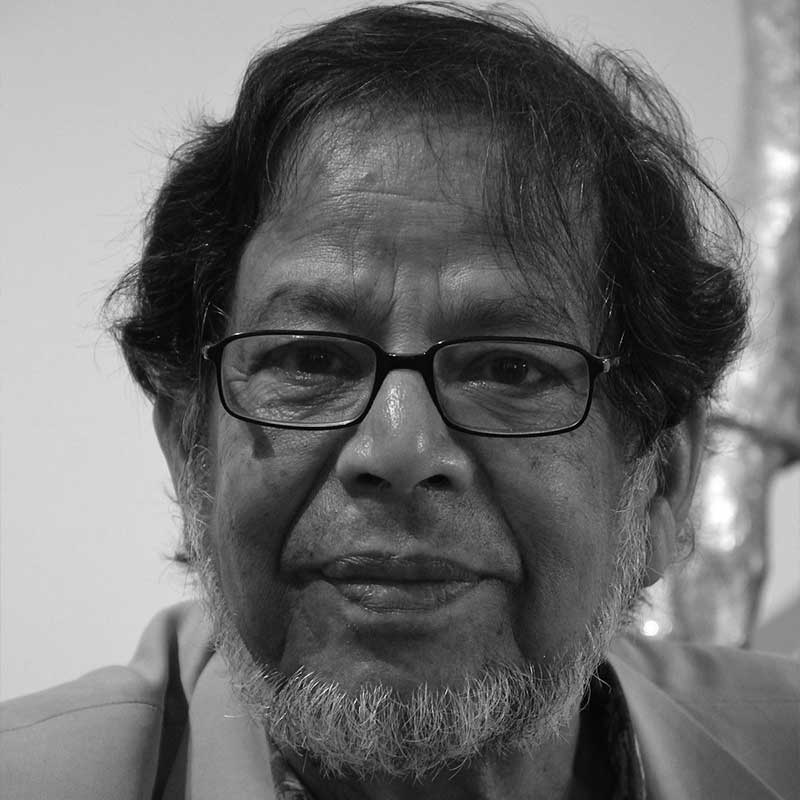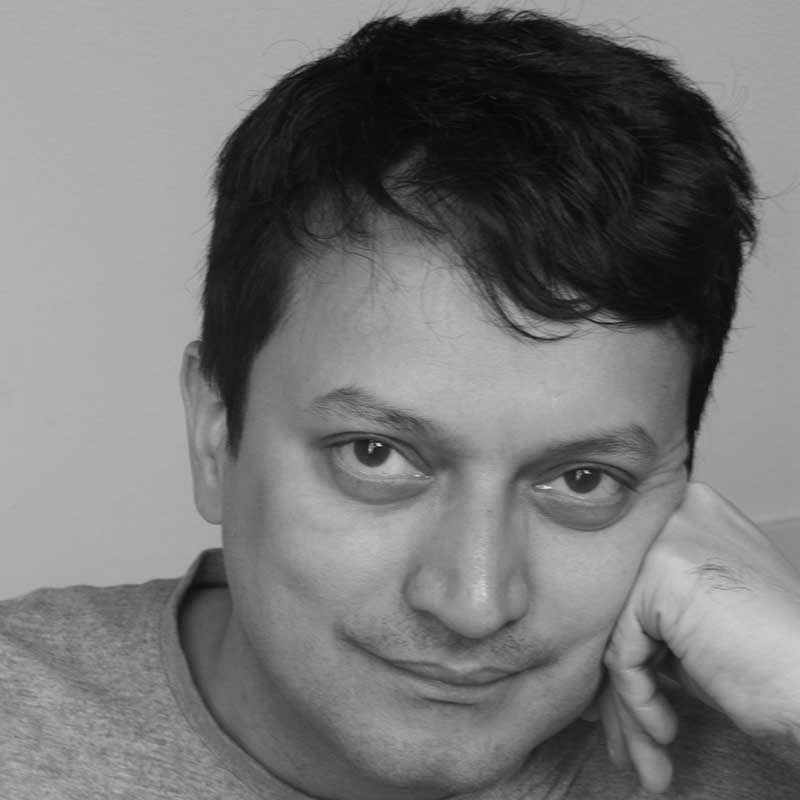
Supported by Art Musings
Artist Sakti Burman, talks to cultural theorist, Ranjit Hoskote about his art practice and his unique world of fantasy, fable and myth.
Sakti Burman has embraced two cultures and created from them his own unique world of fable, fantasy and myth, which has grown ever richer over the years, with age and experience, as his recent work attests. He draws his inspiration from myriad sources, ranging from the Ajanta caves to the paintings of the Italian Renaissance. He combines imagery from India and Europe, and achieves a fusion of Indian patterns with colour preferences inherited from the fin-de-siecle Nabis and Fauves.
His paintings evoke the dreamlike look of a time-encrusted fresco, while his sculptural works act as three-dimensional translations of his paintings.

Sakti Burman was born in 1935 and studied at Government College of Art, Calcutta. He further studied at Ecole Nationale des Beaux Arts, Paris where he continued staying after his programme. A painter and lithographer, He was inspired by European art and fables like Italian Renaissance frescoes. Hinduism and India continues to be an inspiration with imagery from mythology and epics like the Ajanta mural paintings. Mythological narratives like Noah’s Ark, birds, animals, gods and goddesses are seen often in his work including his family members of himself. His own memories and dreams also play a vital role in his works.
He is known for his marbling technique it was an effect he developed after water spilt on his canvas causing the dispersal of oil; thereby creating a frecsco-like dreamy feeling in his works.
Burman has exhibited widely in India, Paris and the rest of the world. Burman was awarded the Medaille d’Argent au Salon de Montmorency and the Prix des Etrangers, Ecole des Beaux-Arts, Paris in 1956. He lives and works in Paris.

Ranjit Hoskote is a cultural theorist, curator and poet based in Mumbai. He is the author of 30 books, including a biography of Jehangir Sabavala, Pilgrim, Exile, Sorcerer (Eminence Designs, 1998), and numerous monographs, among them The Complicit Observer: The Art of Sudhir Patwardhan (Eminence Designs, 2004), Zinny & Maidagan: Compartment/ Das Abteil (Museum für Moderne Kunst, Frankfurt/ Walther König, 2010), and Atul Dodiya (Prestel, 2014). With Nancy Adajania, he is co-author of The Dialogues Series (Popular, 2011), an unfolding programme of conversations with artists. With Maria Hlavajova, he is editor of Future Publics: A Critical Reader in Contemporary Art (BAK/Valiz, 2015).
Hoskote curated India’s first-ever national pavilion at the Venice Biennale (2011), co-curated the 7th Gwangju Biennale (2008), and was co-convenor of Documents, Constellations, Prospects (Haus der Kulturen der Welt, Berlin, 2013). His exhibitions include Bombay: Labyrinth/ Laboratory (Japan Foundation, Tokyo, 2001), a mid-career retrospective of Atul Dodiya; Jehangir Sabavala, a lifetime retrospective (NGMA Mumbai & Delhi, 2005-2006); Unpacking the Studio: Celebrating the Jehangir Sabavala Bequest (CSMVS/ JNAF, 2015), and No Parsi is an Island (with Nancy Adajania; NGMA Mumbai, 2013 & NGMA Delhi, 2016).